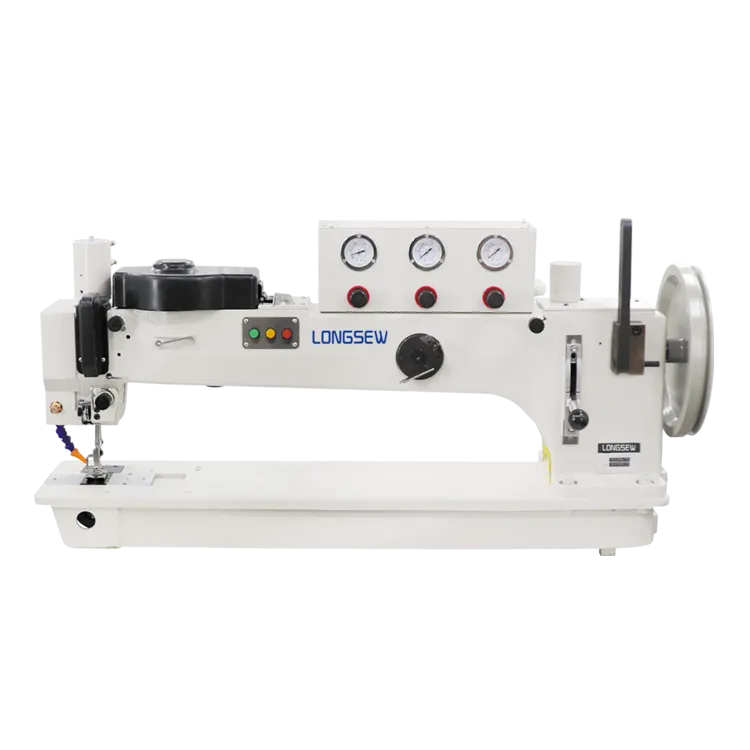single needle sewing machine price
Understanding the Price of Single Needle Sewing Machines
Single needle sewing machines are among the most versatile and widely used sewing machines in the industry today. Renowned for their simplicity and efficiency, these machines are invaluable for various sewing projects, from garment construction to quilting and crafting. However, one of the most pressing concerns for both amateur and professional seamstresses is the price of these machines. In this article, we'll explore the factors that influence the pricing of single needle sewing machines and offer insights to help you make an informed purchasing decision.
Factors Influencing the Price
1. Machine Brand Just like in any other industry, the brand reputation plays a significant role in determining price. Well-established brands like Singer, Brother, and Janome often have higher-priced models due to their history of reliability, customer service, and innovation. Conversely, lesser-known brands may offer more affordable options, but they may lack the same level of support and quality.
2. Features and Technology Single needle sewing machines come with various features that can affect their price. Basic models that perform standard straight stitches and zigzag stitches tend to be more affordable, usually ranging from $100 to $300. However, as you move up the price ladder, you’ll find machines equipped with additional features such as automatic needle threading, adjustable stitch lengths, built-in embroidery functions, and even computerized controls. Prices for these advanced models can range from $300 up to $1,000 or more.
3. Build Quality and Durability The materials and construction of the sewing machine play a crucial role in its cost. Machines built with metal frames are generally more durable and stable compared to those made primarily of plastic. While a higher initial investment might be necessary for a metal-framed machine, it often pays off in terms of longevity and performance.
single needle sewing machine price

4. Accessories and Attachments The price of a single needle sewing machine can also include various accessories like walking feet, quilting feet, and additional bobbins. Some manufacturers bundle these accessories with their machines, providing better value for the price. If you need to purchase these attachments separately, it can add to the overall cost.
5. Market Demand Economic factors and market trends also impact sewing machine prices. During certain times of the year, such as holidays or back-to-school seasons, demand can increase, leading to price fluctuations. Keeping an eye on sales events can help you find the best deals.
Budgeting for Your Investment
When considering a purchase, it’s essential to set a budget that aligns with your sewing needs. If you're a beginner, investing in a moderately priced, versatile machine may be wise. As you grow in your sewing journey, you can evaluate whether an upgrade is necessary. Professional seamstresses may prioritize features and durability, warranting a higher investment.
Conclusion
The price of a single needle sewing machine varies widely based on brand, features, build quality, and market demand. By understanding these factors and aligning them with your sewing goals, you can choose the right machine that fits your budget. Whether you are a novice or an experienced sewer, investing in the right single needle sewing machine can significantly enhance your sewing experience, making it both enjoyable and productive. Always remember to conduct thorough research and consider your long-term needs before making a purchase to ensure the best value for your investment.
-
Leather Sewing Machine: The Industrial Standard for Tough MaterialsNewsJul.18,2025
-
Sail Making Machine: Heavy-Duty Stitching for Industrial and Marine NeedsNewsJul.18,2025
-
Sling Sewing Machine: The Backbone of Heavy-Duty FabricationNewsJul.18,2025
-
Leather Sewing Machine: Precision for Heavy-Duty StitchingNewsJul.18,2025
-
Big Bag Sewing Machine: Powering the Future of Bulk PackagingNewsJul.18,2025
-
FIBC Sewing Machine: Essential Equipment for Bulk Bag ProductionNewsJul.18,2025
-
Heavy Duty Leather Sewing Machine: A Must-Have for Professional LeatherworkNewsMay.28,2025





























